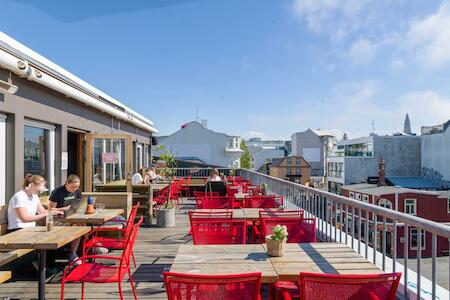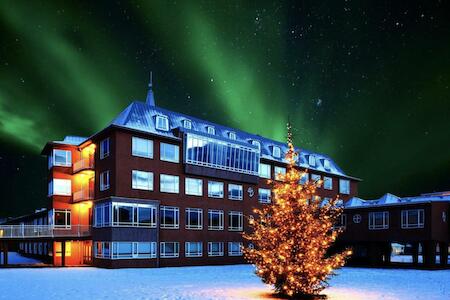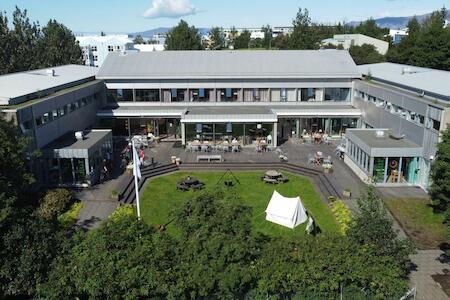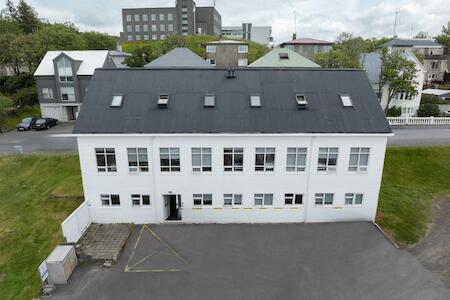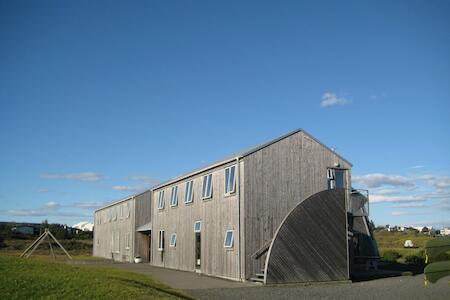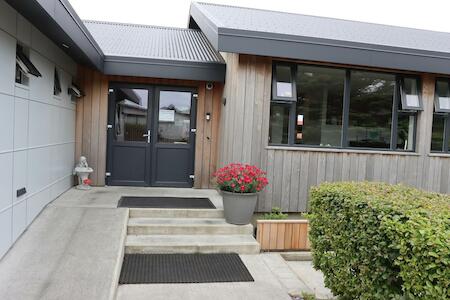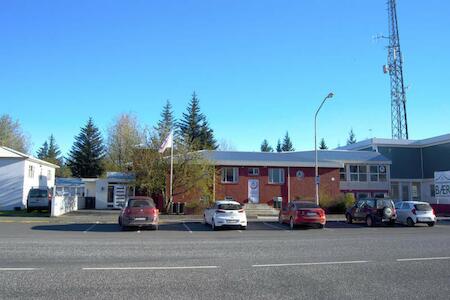Hostels in Island 
Du bist also der Suche nach Hostels in Island. Sehr gut, denn du hast gerade die Webseite gefunden, die deine Reise erheblich einfacher und günstiger machten wird.
Auf dieser Seite listen wir jede einzelne Stadt in Island mit Hostels, Jugendherbergen und anderen günstigen Unterkünften. Hostelz.com hilft dir dabei, deine Jugendherberge und Hostel in Island zu finden. Wir vergleichen für dich die Preise auf den wichtigsten Buchungsseiten wie Hostelworld, Hostelsclub und Booking.com. So kannst du mit kleinem Budget schlafen und beim Backpacken in Nordrhein-Westfalen gutes Geld sparen.
Unsere Städte in Island
Wir listen hier jede einzelne Hostels in Island auf. Insgesamt haben wir für dich günstige Unterkünfte in 38 Städten in Island.
Bitte beachte, dass nicht alle Städte tatsächlich ein echtes Hostel oder Jugendherberge anbieten. Für die Städte ohne Hostels listen wir günstige Unterkünfte wie Pensionen und Gasthäuser. Hier kannst du nach Städten filtern, in denen es eine Jugendherberge/ Hostel oder andere günstige Unterkünfte wie Pension und Budget-Hotels gibt. Das hilft dir bei deiner Planung.
Alle Island Hostels auf einer Karte
Okay, du bist eher der visuelle Typ? Eine Reise mit einer Karte zu planen ist immer praktisch.
Daher zeigt dir diese Karte alle Städte mit Hostels in Island. Sie wird dir bei der Reiseplanung helfen. Zoome einfach in die Karte hinein und klicke auf dein Ziel für weitere Details. Nur damit du es weißt: Wenn wir kein Hostel in einer Stadt haben, gibt es wahrscheinlich kein Hostel in dieser Stadt.
Unser handgeschriebener Reiseführer zu Backpacking Island
Island, dieses malerische Land, liegt fast in gleichem Abstand zwischen dem europäischen Festland und Nordamerika. Daher ist es ein ideales Zwischenziel für Touristen, die auf transatlantischen Reisen sind. Tatsächlich haben mehrere verschiedene Fluggesellschaften kürzlich begonnen, tägliche transatlantische Flüge zwischen verschiedenen europäischen und nordamerikanischen Städten anzubieten, die mehrere Nächte Aufenthalt in Island zu einem ermäßigten Preis beinhalten.
Die gesamte Bevölkerung Islands liegt nur etwas über zweihunderttausend, wobei die Hälfte davon in der Hauptstadt Reykjavik lebt. Außerhalb von Reykjavik gibt es nur dünn besiedelte Städte und Dörfer, die im ganzen Land verstreut sind. Daher gibt es eine enorme Menge an unberührter und schöner Landschaft zu erkunden. Island liegt an der Schnittstelle der amerikanischen und eurasischen tektonischen Platten und erlebt daher viel vulkanische Aktivität. Es gibt viele aktive Vulkane und Geysire, die im Land besucht werden können. Einige davon befinden sich in der Nähe von Reykjavik, und es gibt mehrere Reiseunternehmen in der Stadt, die regelmäßige Besuche zu diesen Attraktionen anbieten.
Island liegt unmittelbar unter dem Polarkreis und erlebt daher lange Tage mit Sonnenlicht während der Sommermonate und sehr kurze Tage im Winter. Trotz seiner extrem hohen Breite hat Island jedoch relativ milde Winter aufgrund des moderierenden Effekts des Nordatlantikstroms (Durchschnittstemperatur von null Grad). Die Sommermonate können jedoch kühl sein (etwa neun bis dreizehn Grad Celsius). Eine der Hauptattraktionen, die man in Island im Winter sehen kann, ist die Aurora Borealis; verschiedene Reiseunternehmen bieten den Besuchern die Möglichkeit, dieses einzigartige und glorreiche Schauspiel zu erleben, indem sie sie zu idealen Aussichtspunkten transportieren. In den Sommermonaten ist eine der Hauptattraktionen die Mitternachtssonne, die im Norden des Landes sichtbar ist.
Es gibt auch viele Dinge zu sehen und zu tun in und um die Stadt Reykjavik selbst. Eine der beliebtesten Attraktionen ist die Blaue Lagune, ein geothermisches Spa, das eine halbe Stunde Fahrt von Reykjavik entfernt liegt. Es wird aus dem Abfluss eines nahegelegenen geothermischen Kraftwerks gespeist. Das Wasser hat eine durchschnittliche Temperatur von achtunddreißig Grad Celsius und enthält Mineralien wie Siliziumdioxid und Schwefel. Es wird auch angenommen, dass es Menschen mit Hauterkrankungen wie Psoriasis hilft. Walbeobachtungen sind eine weitere beliebte Aktivität unter Touristen. Zwischen April und Oktober sind Touren vom Haupthafen in Reykjavik verfügbar. Mehrere verschiedene Walarten, darunter Mink- und Buckelwale, können in ihrem natürlichen Lebensraum gesehen werden.
Isländisch ist die Amtssprache des Landes, jedoch spricht die überwiegende Mehrheit der Isländer Englisch und ist gut an Touristen gewöhnt. In den letzten Jahren hat die Regierung große Geldbeträge in die Tourismusbranche investiert, und daher hat das Land einen dramatischen Anstieg der Touristenzahlen erlebt. Island wurde als eines der sichersten Länder der Welt gewählt und ist auch eines der saubersten, mit sehr minimaler Luftverschmutzung.
Es gibt einige Hostels in Island, die in Reykjavik liegen und sowohl private als auch Schlafsaalunterkünfte zu einem angemessenen Preis anbieten. Es gibt auch Hostels in anderen Städten des Landes, wie in Akureyri und Seydisfjordur. Im Allgemeinen sind Hostels in Island und touristische Aktivitäten nicht zu teuer. Das Essen gehen kann jedoch sehr teuer sein, und Touristen mit einem Budget wird empfohlen, Lebensmittel in Supermärkten zu kaufen.
Handgeschrieben von lokalem Experten für Island Hostels Hostelz
Reisetipps für Island - von der Community
Hey Leute! Hier sind noch ein paar Tipps von der Community, von ihnen zu euch und von euch zu ihnen. Dieser Raum ist Reisenden gewidmet, um ihre besten Tipps zum Backpacking in Island zu teilen. Schaut genauer hin - die Hostelz-Community teilt echte versteckte Juwelen, Insider-Wissen und allgemeine Eindrücke von Island. Jeder ist willkommen, etwas Nützliches, Lustiges, Unerwartetes und das "absolut Notwendige zu wissen, bevor ihr geht" hinzuzufügen - teilt, teilt und dann teilt noch ein bisschen mehr!
Mehr aus unserem Blog über Island
Aus unseren endlosen Backpacking-Geschichten und Reisetipps sind hier die Blog-Posts, die dir helfen werden, Island besser zu erkunden.
FAQ über Hostels in Island
Es gibt vor deiner Reise noch einiges zu planen. Wir helfen dir dabei. Wir haben hier einige, häufig gestellte Fragen rund um das Thema Jugendherbergen, Hostels und Unterkünfte zusammengestellt.
Hostels und Preise vergleichen
Welche Hostel Buchungsplattformen sind am besten?
Es gibt mehrere Hostel-Buchungsseiten, wie Hostelworld.com, Hostelsclub.com und Booking.com. Obwohl jede Plattform ihre Vor- und Nachteile hat, gibt es eine universelle Wahrheit, die du als Backpacker beachten solltest: Keine einzige Buchungsseite kann immer die besten Preise anbieten.
Genau da kommt Hostelz.com ins Spiel. Mit Hostelz.com kannst du die Preise auf allen Buchungsplattformen mit 1 Klick vergleichen.
Für dich als Backpacker ist Hostelz.com die absolut beste Webseite um Hostels und Jugendherbergen zu finden.
Was kosten Hostels in Island? Preise
Die Preise variieren immer in Abhängigkeit von verschiedenen Faktoren. Das Wochenende ist in der Regel teurer, genau wie Feiertage. Bitte berücksichtige auch lokale Feiertage und besondere Veranstaltungen wie z.B. Festivals, Stadtfest, eine große Messeausstellung und ähnliches.
Hier auf Hostelz.com kannst du nach genauen Hostelpreisen in Island suchen. Wähle einfach deine Stadt und ein Datum aus. Das System ermittelt dann die Preise, damit bekommst du eine Vorstellung, welche Preise dich für Hostels in Island erwarten.
Was ist die beste Zeit um Hostels zu reservieren?
Wenn du in guten und den besten Hostels übernachten möchtest, dann empfehlen wir, dein Hostel etwa 1 Monat vor Reiseantritt zu reservieren. Für die regulären Hostels sollte eine Buchung eine Woche vorher in Ordnung sein. Dies hängt wiederum immer davon ab, ob es z.B Wochenende oder ein bestimmter lokaler Feiertag ist.
Wir haben einen detaillierten Artikel darüber geschrieben, wann du am besten dein Hostel reservierst.
Sicherheit und Packliste
Sind Hostels in Island sicher?
Ganz allgemein gesagt, sind Hostels so sicher wie du sie selber machst. Wir empfehlen immer ein Vorhängeschloss einzupacken, die Schließfächer zu nutzen und auf die eigenen Dinge aufzupassen. Du solltest auch sicherstellen, dass du immer in sicheren Hostel mit Schließfächern und einer sicheren Nachbarschaft schläfst. Bitte lese dir immer genau die Bewertungen der Hostels durch. Die geben meistens einen guten Einblick was dich erwartet und wie sicher es ist.
Was solltest du für eine Jugendherberge und Hostel einpacken?
Es gibt ein paar Dinge, die du immer einpacken solltest.
Das sind die 5 Dinge, die du immer brauchen wirst, aber es gibt natürlich noch mehr. Wir haben eine detaillierte Packliste für Hostels geschrieben.


